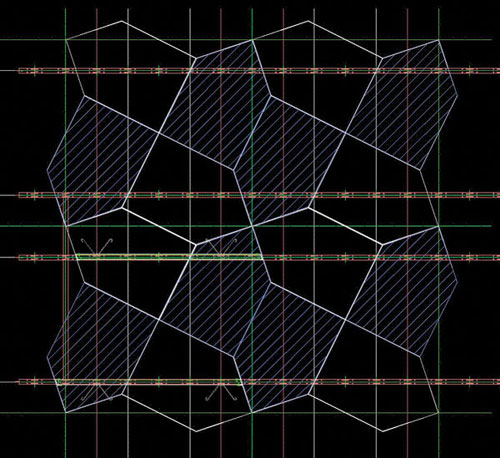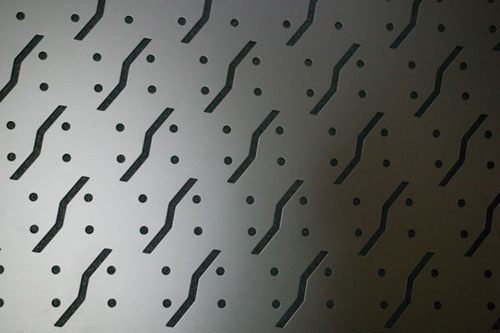Form Follows Fun: Design Options in Modern Ceiling and Wall Systems
Advanced Design Options
Once a basic tessellation pattern has been determined, it can be embellished in a number of ways. For example, edges of adjacent panels can be of different heights so panel faces lay in different planes. To create even more pronounced facets, the faces of the panels themselves can also contain folds.
The surface appearance of each panel offers another variable. Varying metal textures can be used to differentiate adjacent panels of the same material. Different wood species can be combined. Controlling wood grain orientation can also emphasize tessellation patterns. And of course, differing materials can be juxtaposed or even joined into a single panel.
 |
Simplifying installation of this tessellated ceiling, clusters of four pentagons are factory-assembled. Torsion springs attach panels to parallel support members. Photo courtesy of Ceilings Plus |
 |
Customized perforation patterns can form tessellated patterns and add visual texture to this curved panel. Photo courtesy of Ceilings Plus |









